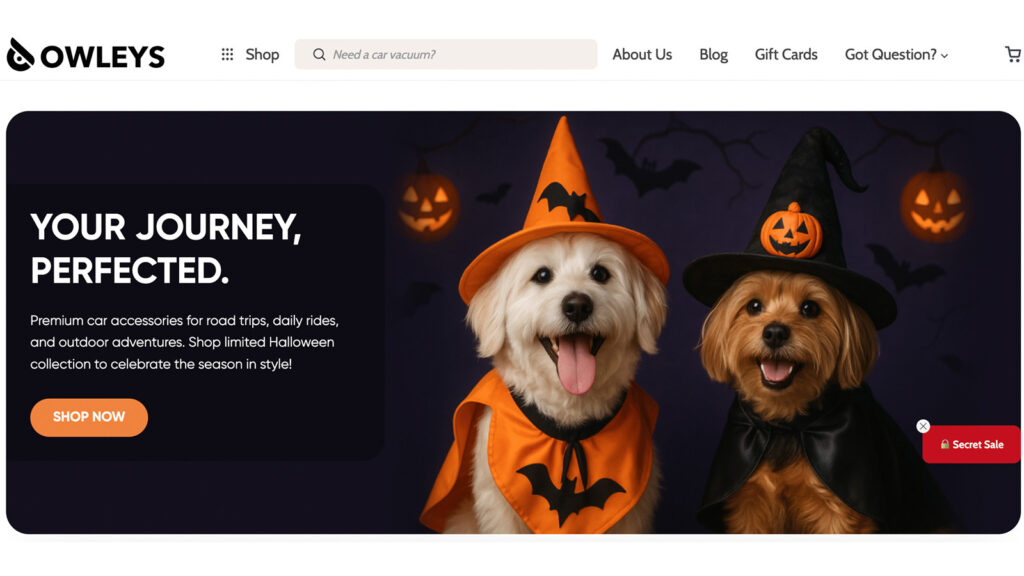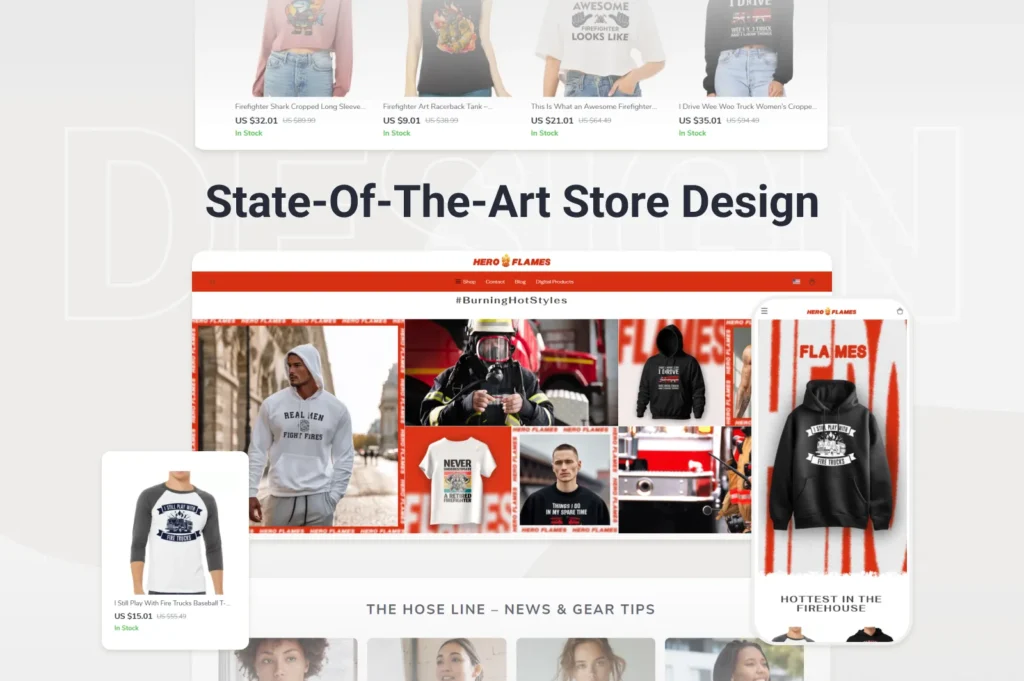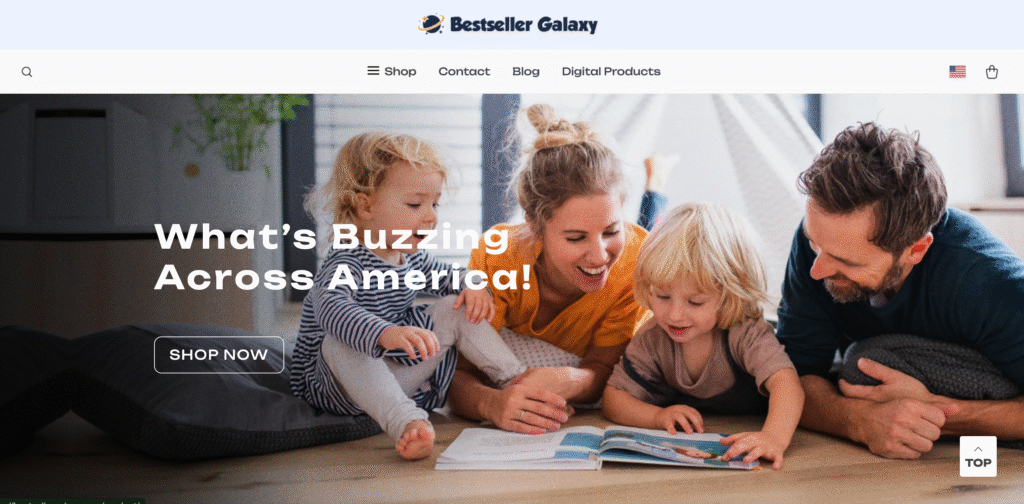Buying a ready-made online store is a great shortcut — you skip the hardest part of building everything from scratch. But once your store is live, how do you get people to actually visit and buy? That’s where marketing comes in. It’s what helps your site show up higher in search results, brings in customers from social media, and makes your products the ones people talk about and share. Good marketing also builds trust, so visitors don’t just buy once — they come back again.
The tricky part? Trying to handle all of this by yourself usually ends up stressful and rarely gets the best results. That’s why Offiro created marketing tools made specifically for online store owners. They take care of the hard stuff, so you can focus on running your business. In this article, we’ll show you how smart marketing can grow your profits — and how Offiro makes it surprisingly simple.

1. Social Media Marketing (SMM)
Did you know that, according to worldpopulationreview.com, more than 239 million Americans use social media every single day? Most of them are there to chat, watch videos, or stream something fun — but for online store owners, these platforms are an incredible marketing opportunity. If you can figure out how to reach your target audience and speak their language, your Instagram, TikTok, or Facebook page can turn into a second digital storefront that drives sales almost on autopilot.
How do you actually stand out in an endless feed of videos and posts? Here are a few proven strategies:
- Build your brand presence. Start by creating accounts on platforms like Instagram, TikTok, Facebook and Pinterest. Post regularly, and make your content feel like a conversation rather than generic “buy now” ads — people are tired of those. For example, instead of “Buy our new candle,” show a short clip of it lighting up a cozy evening.
- Experiment with formats. There’s no single recipe for viral content. Short videos work best for fashion or beauty products and longer how‑ to posts or livestreams fit DIY or tech items. Don’t be afraid to try new ideas: tell a joke, share a behind‑the‑scenes moment, or spark a little debate. Even controversial opinions can generate real engagement.
- Collaborate with influencers. Influencer marketing is bigger than ever in 2025 with micro‑influencers being especially effective. Imagine a lifestyle blogger showing how your eco-friendly coffee mugs fit into their morning routine. Their followers see the product in action and trust the recommendation because it comes from someone relatable.
- Let customers speak. Reviews and comments are an integral part of social media life. Instead of ignoring or deleting criticism, use it as a chance to show you care. A quick “We’re sorry about that, let’s find a solution” can fix both the issue and your reputation. And when people praise your product? Share those posts like your badges of honor.
- Be transparent. The trend now is honesty. Overpromising or faking perfection backfires too often. If your product solves one specific problem — say, keeping coffee warm for hours — highlight that benefit honestly instead of claiming it’s “ the best mug ever made.” People no longer trust fake perfection.
- Be patient. Social media growth takes time. You won’t go viral overnight — and you shouldn’t hope for it. Instead focus on steady, consistent posting. Give it some time and your audience will come naturally.
2. Premium Blog Posts

Content marketing is still there in the age of AI. Articles and videos build your reputation piece by piece. The better your content, the more likely it is to influence readers and AI‑powered engines that pull quick answers for users. One thing hasn’t changed: content converts. Especially when it appears in well‑known outlets like Forbes.
How do you make your blog posts and articles work as hard as they can? Here’s what matters most:
- Write with expertise. Nobody knows your products better than you do. Use your knowledge to share real insights: if you sell handmade furniture, write a post about how to choose durable materials or maintain wood surfaces. People will read the text because it offers real value and take note about your products too.
- Invest in your blog. Before customers search for “Buy X,” they often search for “What is X?” or “Do I need X or Y?”. When your blog answers these questions, new people enter your marketing funnel, and if you can guide them through the rest, you get real customers.
- Work with established platforms. Try to publish your content on popular blogs and niche forums. Imagine a feature about your eco‑friendly kitchenware on a popular lifestyle site: your content will be shown to large audiences and borrow some of that site’s trust and authority.
- Be consistent and patient. One article won’t transform your sales overnight. Content marketing is a long game: experiment, analyze, see what works and adjust your strategy as you go. With time, your content will become powerful enough to drive traffic and sales without any help from you.
3. Social Media Ads

Facebook, Instagram, and TikTok are the most powerful places to run ads. Why? Because these platforms let you target people with surgical precision. You can choose who sees your ad based on location, hobbies, behavior, and even life events, so your message lands in front of the right people at the right time. Social media ads can connect you with potential customers 90% of the time or even more if you’re using them right.
But to make ads work you need a sound strategy. Like this:
- Focus on quality. Your ad competes with countless videos and photos in someone’s feed. Invest in high‑quality images, short videos and simple animations. A clean product shot or a quick demo video often performs better than complicated graphics.
- Know your audience. The best‑performing ads speak directly to a need or pain point. If you’re targeting young parents, show how your product saves them time during their busy day. If you sell fitness gear, highlight how it helps customers stay active between work and family. Make the benefit crystal clear and make sure it’s seen right from the start.
- Study your competitors. Your rivals can be your best teachers. Analyze their ads: designs, offers, formats, and figure out how you can do better. Maybe your product has a feature theirs doesn’t, or maybe you can tell a more compelling story. Borrow what works and add your unique features.
- Track and adjust constantly. Check campaign performance regularly: which visual gets the most clicks, conversions, comments — and try to look beyond the numbers. Why do people engage with the content? What makes them drop off at checkout? Use the data to tweak your message, visuals and targeting until you find what works best for you.
- Automate whenever possible. Managing ads manually can eat up hours. Thankfully, most platforms and third‑party tools let you schedule, test, and optimize campaigns automatically. Keep your ads working 24/7 on autopilot and focus on growing your business instead.
4. Email Marketing

Email might seem old‑school compared to TikTok or Instagram, but it’s still one of the most powerful marketing tools. In fact, it’s even more relevant now thanks to visual editors, personalized templates, and automation tools. A good email attracts new customers, but it can also bring people back after they’ve made a purchase or abandoned a full cart.
So, how do you make emails that people will open and read? Try this out:
- Get creative with the subject line. It’s the first thing your customers see so make it catchy, and personal without sounding like spam. Try asking a question they’ve been wondering (“Need a faster way to brew your morning coffee?”) or teasing a solution (“5 quick fixes for messy morning routines”). Add a personal touch when possible: include their name or reference a recent order.
- Match your tone to your audience. Each customer group responds to a different style. A parenting brand might choose friendly and empathetic language, and a tech company might benefit from straightforward, solution‑driven messaging. Don’t be afraid to mix things up — a series of playful “life hacks” will work alongside more serious product announcements.
- Tell stories and show proof. People react more to stories than raw facts, so give them exactly that. Share how your product solved a problem for a real customer or just made their day easier. Combine storytelling with social proof like reviews or testimonials to make your claims feel more relatable.
Offer real value for free. If every email feels like a sales pitch, people will tune out. Instead, mix in helpful advice and product tips to make them useful. Make your email generate value by including exclusive discounts and other rewards. For example, suggest accessories that complement what they’ve already bought or drop a limited‑time coupon code as a thank‑you.
5. Search Engine and AI Engine Optimization (SEO/AEO)

If you want steady traffic you need to show up where people are searching. And that means one thing: the first page of results. Whether someone is typing into Google or asking an AI assistant, getting your store’s link in front of them is the end goal. But competition is fierce: Amazon or Walmart won’t step aside easily. The good news: smaller stores can still compete with the right strategy.
Want to climb those rankings and stay visible? Start with these steps:
- Polish your product pages. Both search engines and people love clean and informative pages. Use high‑quality photos, clear specs, and friendly “flavor” text that explains why your product stands out. Add short demo videos if you can. And don’t forget keywords: include different search terms people might use, like “kids’ wooden desk” or “eco‑friendly study table,” so your page shows up for multiple queries.
- Optimize for mobile. More than 50% of online shopping happens on smartphones. If your site doesn’t load fast or looks clunky on small screens, people will just find another place to buy what they want. Make sure every page adjusts to all popular resolutions, loads in 3–4 seconds, and keeps key buttons easy to tap.
- Simplify navigation. Friction kills sales. Use clear filters, sorting options, and intuitive search tools to help customers find everything they want as quickly as possible. Check whether menus and buttons stand out and clearly explain what happens when you click them. A smoother experience equals happier shoppers and better rankings.
- Track performance and fix weak spots. Look at analytics regularly to see which pages underperform. Are customers bouncing from certain products? Are they leaving at checkout? Pinpoint those moments and tweak your layout and descriptions to keep them engaged.
- Think beyond humans and optimize for AI. Assistants slowly replace search engines, so you want your content structured so they AIs can read it easily. Use clear headings and descriptive text so AI can confidently recommend your products. This is how your brand gets mentioned when someone asks Gemini or ChatGPT, “What’s the best ergonomic chair under $200?”
How Offiro Helps You Grow Your Shop with 5 Marketing Tools
When it comes to digital marketing, Offiro has you covered from day one. We know how to send traffic to your shop and we’ve built a toolkit to make it happen. Our services include ( but aren’t limited to):
- SEO/AEO
- Social Media Marketing
- Content Marketing
- Email Marketing
- Social Media Ads
The best part? We can start improving your shop immediately after you buy it. Every store in our listing comes with a marketing strategy you can put into action on day one. Already running a store? No problem — we can jump in anytime and help you scale.
And here’s the kicker: as your sales grow, your marketing pays for itself. The extra revenue you earn covers the cost of these services — leaving you with one thing: a bigger profit.
Curious about what Offiro can do for your store? Contact us today and let’s plan your growth together.
Final Thoughts
Growing an online store requires active, consistent marketing to show up where your customers spend their time, answer their questions before they ask, and build trust that turns one‑time buyers into loyal customers.
Offiro makes this whole process easier. From SEO to social media to email campaigns, we provide tools and strategies that help you stand out, reach more people, and boost profits without burning yourself out.
Ready to grow your store? Whether you’re buying your first ready‑to‑go shop or scaling an existing one, Offiro can help you hit the ground running. Get in touch and let’s make your store the next success story.

















